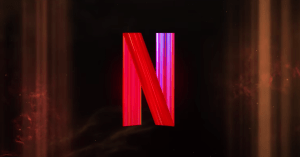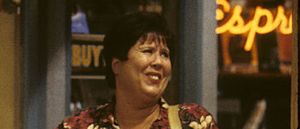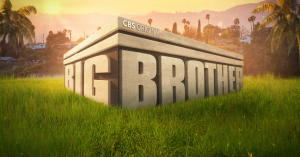John Carpenter’s Halloween gave audiences a defining installment in the “slasher” subgenre, with films like Bay of Blood, The Texas Chain Saw Massacre and Black Christmas helping lay the foundation for a mysterious killer executing coeds one by one. Hoping to capitalize on the horror trend, films like Friday the 13th, The Burning and My Bloody Valentine came out in the early ’80s, solidifying the popularity of horror films that emphasized sex and violence.
The last installment in the Halloween series was Rob Zombie’s Halloween II in 2009, which was a sequel to his 2007 reboot. The filmmaker’s unique style in these films was commended, but the second film was enough of a disappointment that it would be seven years before any future Halloween plans were announced.
Videos by PopCulture.com
Blumhouse Studios announced that it would be producing a new installment in the Halloween saga with original mastermind Carpenter in the executive producer’s chair, heading for an Oct. 19 release. The writing/directing team of Danny McBride and David Gordon Green (Pineapple Express, Your Highness) have explained they hope to make a film more similar to the series’ earlier installments and avoid many of the film’s sequels.
While the title alone will guarantee people will check out the new film, does the sequel have anything going for it other than a sense of familiarity? Have audience’s tastes shifted towards the supernatural since the heyday of the slasher?
This new Jamie Lee Curtis-starring Halloween could be the last gasp of the slasher genre as we know it.
The Rise and Fall of the Slasher
Unsurprisingly, you can always get movie fans to go see a movie full of blood and nudity, regardless of the plot. The ’80s became saturated with films whose titles were more engaging than the films themselves, or at least implied plenty of sex and violence, ranging from Slumber Party Massacre to Silent Night, Deadly Night to Prom Night.
Sadly, as the decade came to a close and audiences were given a barrage of sequels to familiar properties (the ’80s saw the release of eight Friday the 13th films), the expectations of horror had begun to shift, with audiences embracing more cerebral fare like In the Mouth of Madness and Jacob’s Ladder. Additionally, true crime and serial killers in the real world gave way to more sophisticated films like Silence of the Lambs, which won multiple Academy Awards.
Wes Craven’s Scream marked a turning point for the slasher subgenre, as it combined wit and self-awareness with a solidly thrilling narrative. The film caused a brief resurgence of the slasher, with films like I Know What You Did Last Summer, Disturbing Behavior and Valentine casting hot young talent, but the slasher fizzled out again by the early ’00s.
Films like Saw and Final Destination began to fulfill audiences’ taste for blood, delivering gruesome effects but little in the realm of plot. These two series alone have 12 total installments, with plenty of other films in the time period following a similar formula.
Paranormal Activity‘s debut in 2009 caused a deluge of low-budget found footage movies that tried to convey realism to its audience. Additionally, the Insidious series and the recently developed universe of films related to The Conjuring has shown the public’s interest in things that go bump in the night as opposed to watching couples go skinny-dipping.
Halloween’s Ups and Downs

The original Halloween put a terrifying notion into viewers’ heads: What if that intimidating figure across the street really was out to get you? Carpenter setting the story on Halloween gave a perfect excuse for the killer’s identity, often referred to as “The Shape,” an air of ambiguity, a concept which the film’s sequels would squander.
A sequel came three years after the original that took place moments after the first film’s climax, while the third film ditched the Michael Myers mythology completely. Audiences’ expectations of Michael Myers being an integral component of the series resulted in Halloween III: Season of the Witch becoming a flop, forcing the series to course-correct with the fourth film. The sequels began to dwindle into obscurity, at least until Jamie Lee Curtis, star of the first two films, returned to the series for the seventh film, which effectively negated the events of the third through sixth installments.
Curtis’ return was welcomed positively enough, resulting in her appearance in one more film, but Halloween: Resurrection saw the end of the original film’s storyline.
Rob Zombie rebooted the series with 2007’s Halloween, which focused more on Michael’s development as a child that could explain why he’d murder his sister and return to his hometown to eradicate remaining family members. Following that reboot’s sequel, interest in the series fizzled out, coinciding with the rise of supernatural horror films.
Michael Myers Returns…Again?
Between the Purge series, Insidious series and Paranormal Activity series, Blumhouse Productions have given audiences some of the most memorable and successful horror films of the last decade. The films are easily accessible and consumed by a vast amount of audiences, both new and familiar to the world of horror.
To some, Blumhouse producing a new Halloween film makes perfect sense, as its a successful studio handling a long-dormant franchise. To others, however, the studio’s reliance on accessibility and universal appeal is cause for concern that the new installment will be another rehash of familiar material. In fact, the film’s release date marks the 20th anniversary of Halloween: H20, an odd coincidence surrounding Curtis’ returns to the franchise.
Over the course of the franchise, Michael Myers has been shot, stabbed, decapitated and possessed by a supernatural presence under the orchestration of the Thorn Cult, making audiences wonder what the next installment could possibly hold.
“Look at where the Halloween franchise has gone,” McBride expressed in 2017. “There’s a lot of room for improvement… we are humongous fans of John Carpenter and of what he did with the original Halloween, so I think from watching this and being disappointed by other versions of this series, I think we’re just trying to strip it down and just take it back to what was so good about the original.”
With Carpenter providing the new film with its score, the stage is set for the new Halloween to revive the series, along with it series like Friday the 13th or A Nightmare on Elm Street, creating a slasher revolution.
On the other hand, all of this build-up could lead to another generic sequel, causing audiences to turn to the indie horror field and realize that films like The Guest or It Follows are the new generation of horror, whose strengths lay in what influences they’ve taken from the past while giving contemporary twists.
We’ll find out when the new Halloween hits theaters on Oct. 19.








